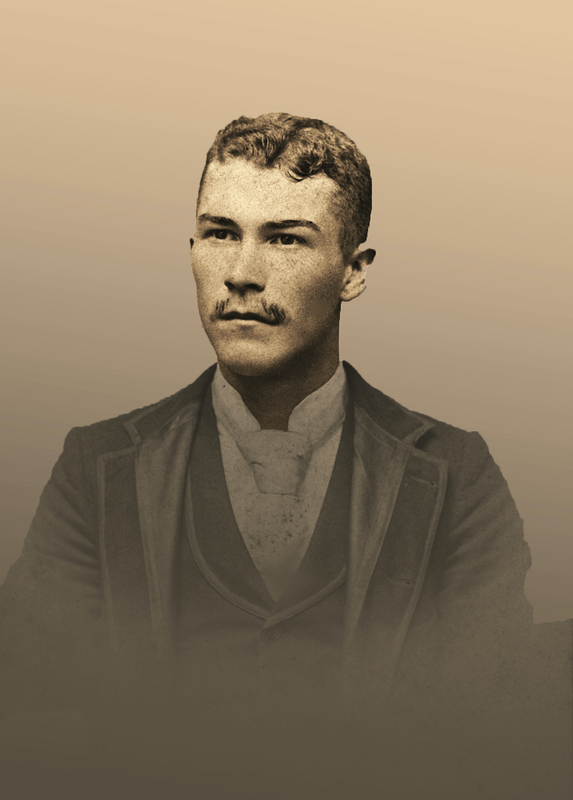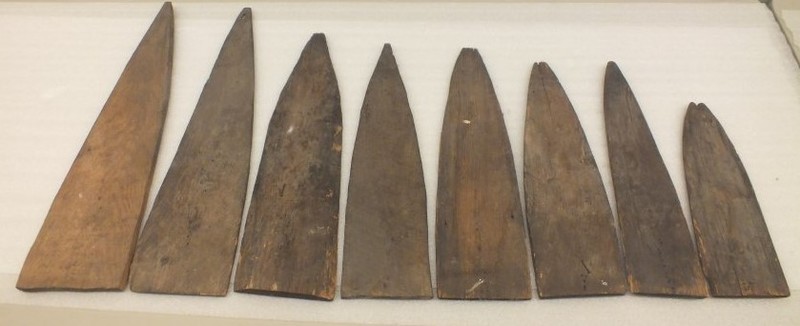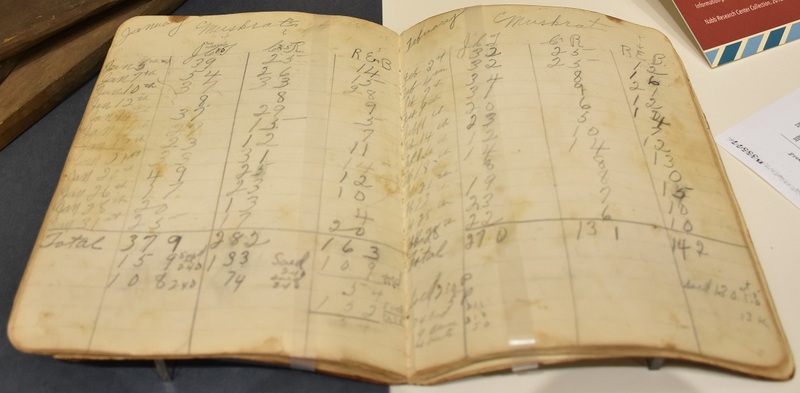Muskrat Hide Stretchers and Logbook
After successfully hunting a muskrat, or any woodland animal from a raccoon to a fox or a beaver, one of the next steps is to dry and preserve the fur, making it ready to tan, sell, or use. To dry the hide, a wire or wooden hide stretcher is typically used. Once the hide has been separated from the rest of the muskrat, it is slipped over the stretcher with the skin, not the fur, exposed and secured with pins. In just a few hours or so, the skin will be dry to the touch and be ready to turn, exposing the fur and allowing the pelt to completely dry after a few days.
The hide stretchers pictured below were used by Josiah “Joseph” Collins Truitt (1872-1957), a businessman from Mardela Springs who hunted muskrats in the late 19th and early 20th centuries. Truitt’s grandson, Charles Emery, recalls that the hides would hang in the attic of their home, a residence that remains in the family to this day.



